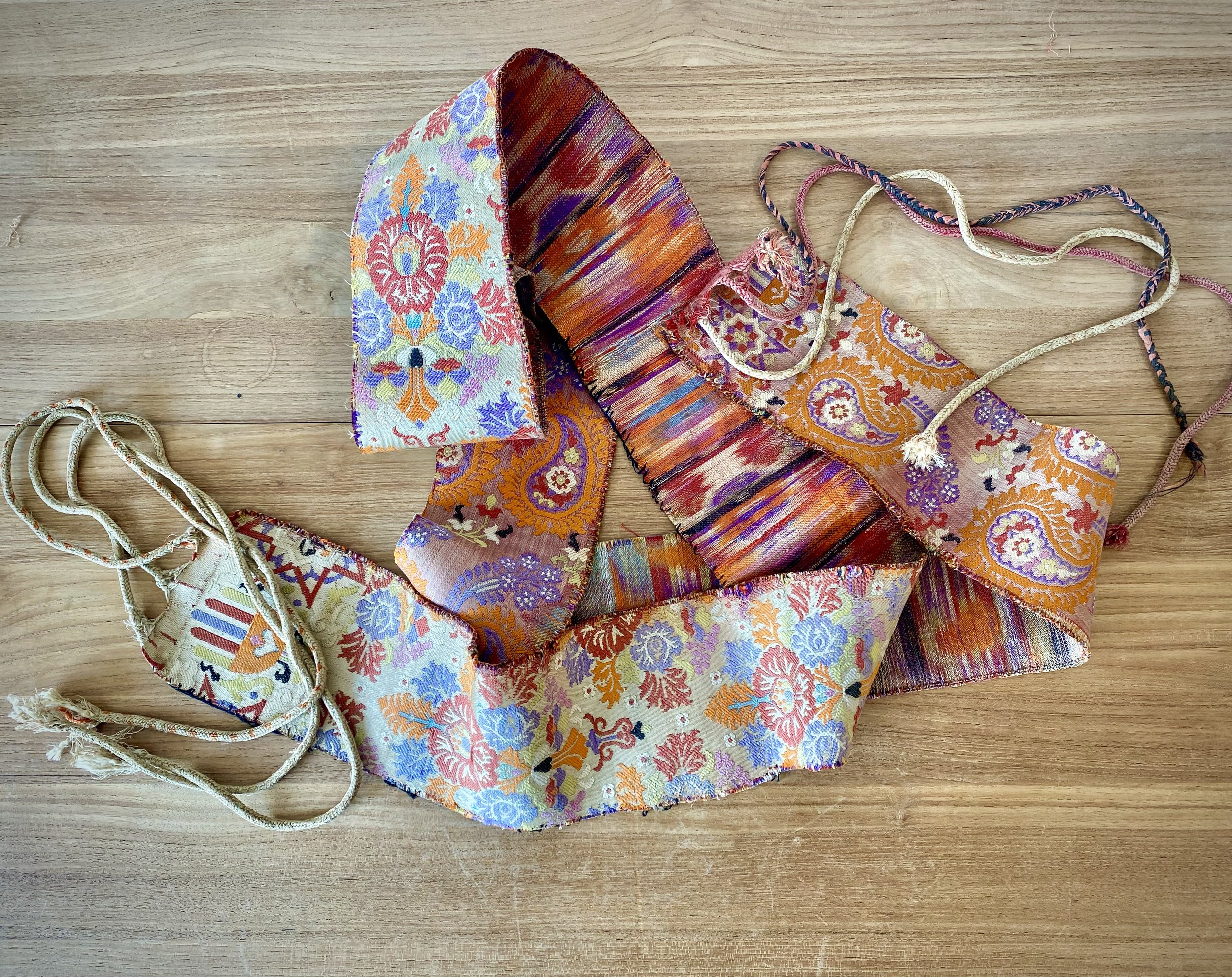 Image 1 of 9
Image 1 of 9

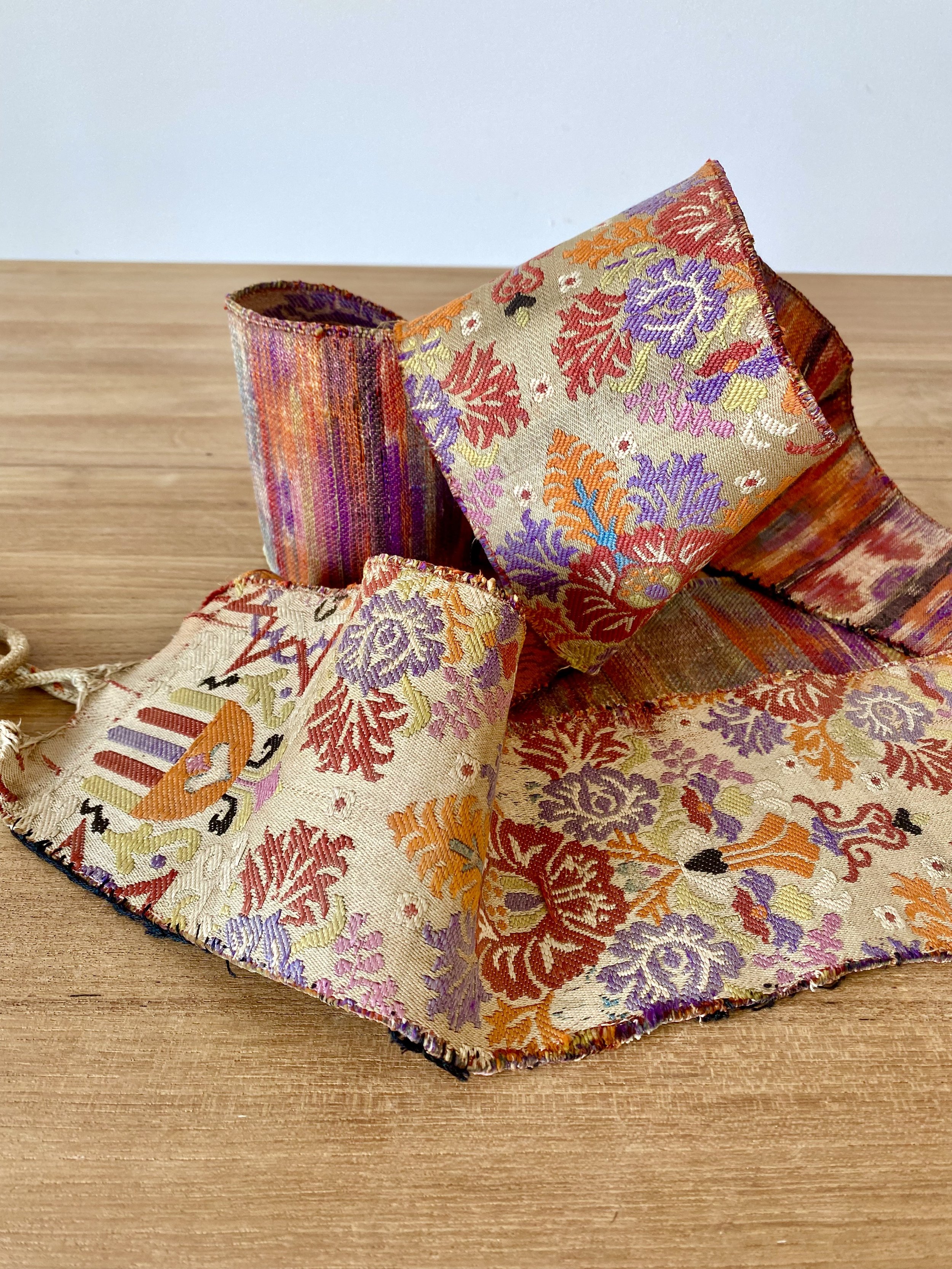 Image 2 of 9
Image 2 of 9

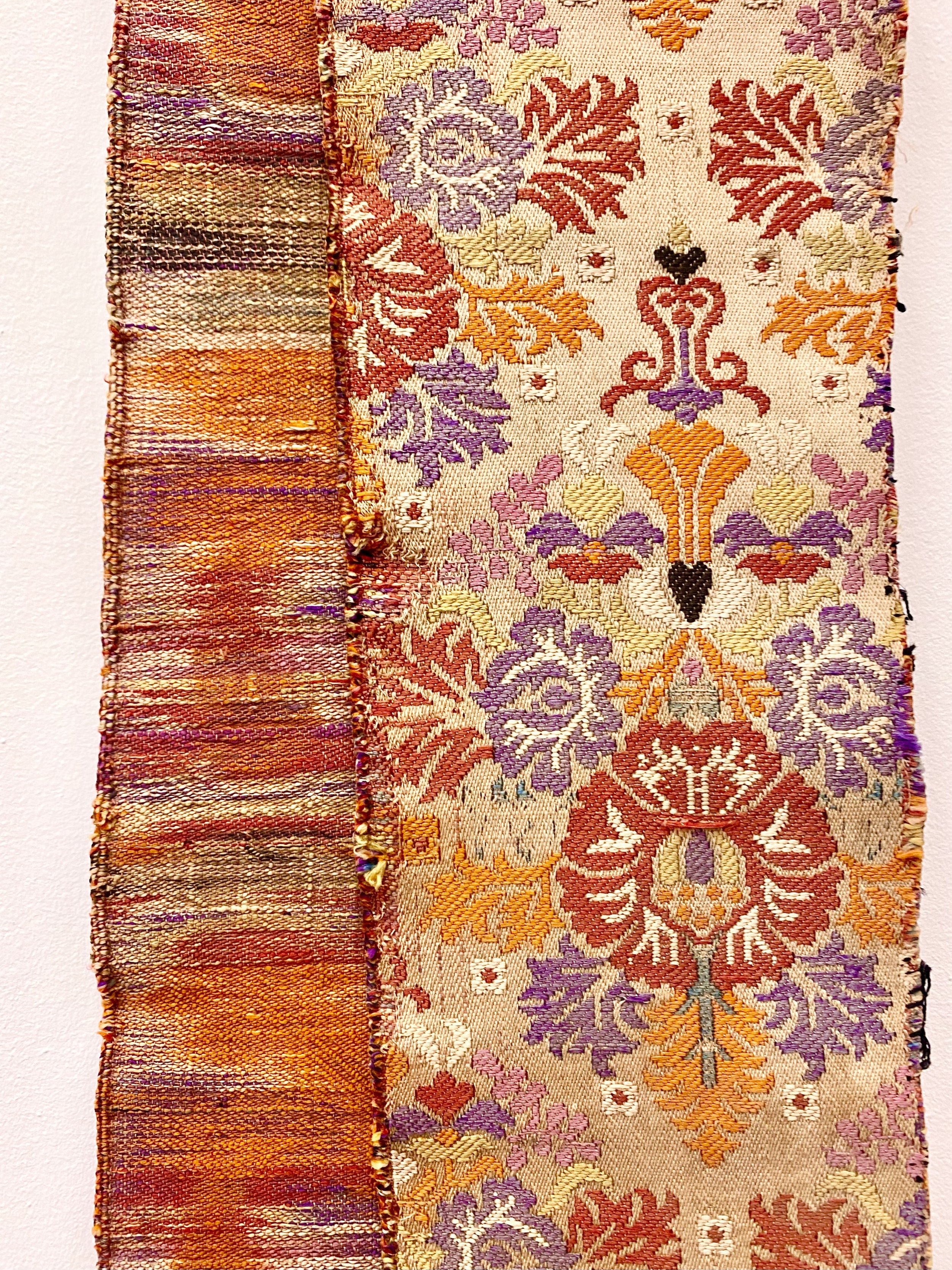 Image 3 of 9
Image 3 of 9

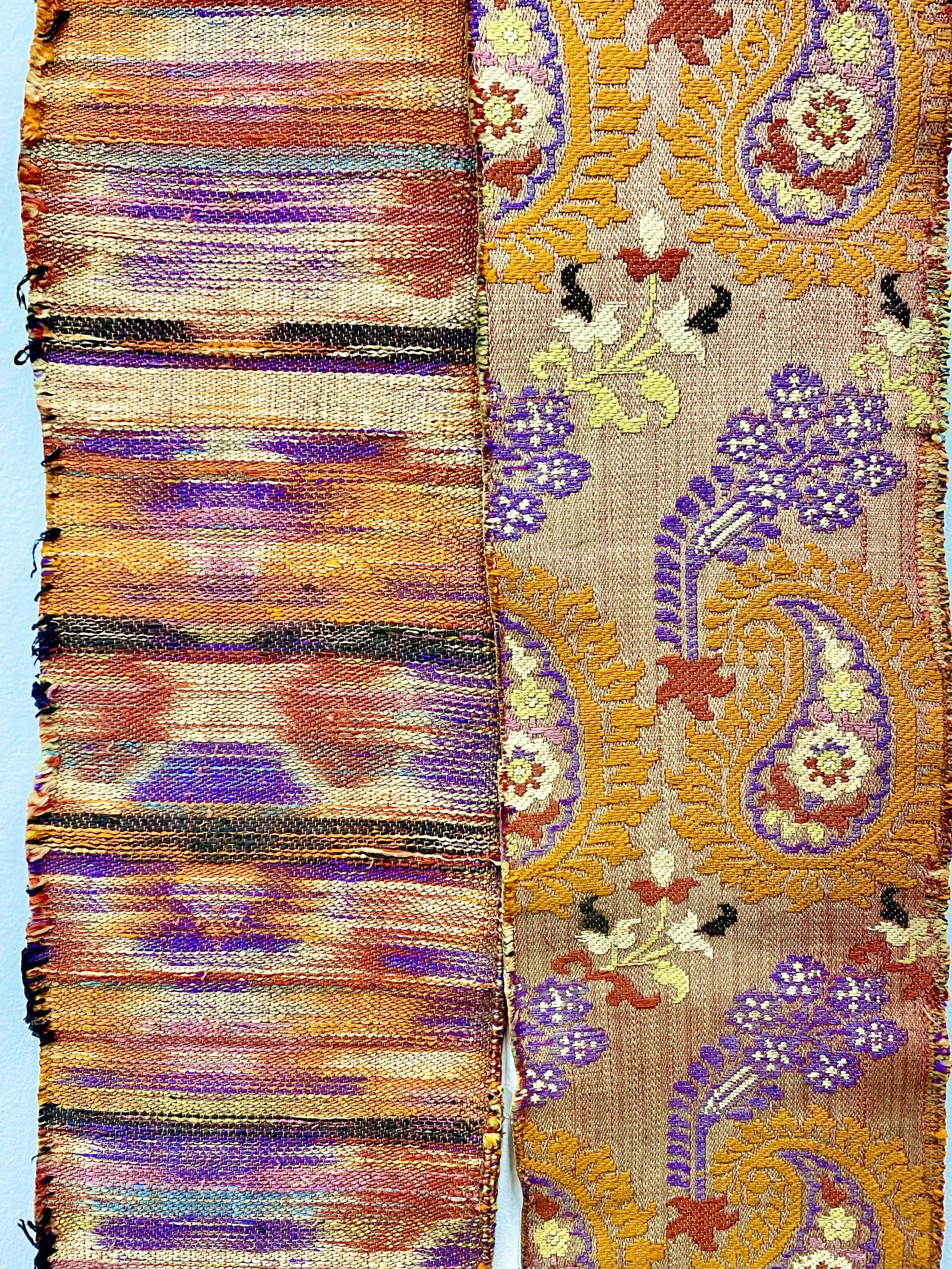 Image 4 of 9
Image 4 of 9

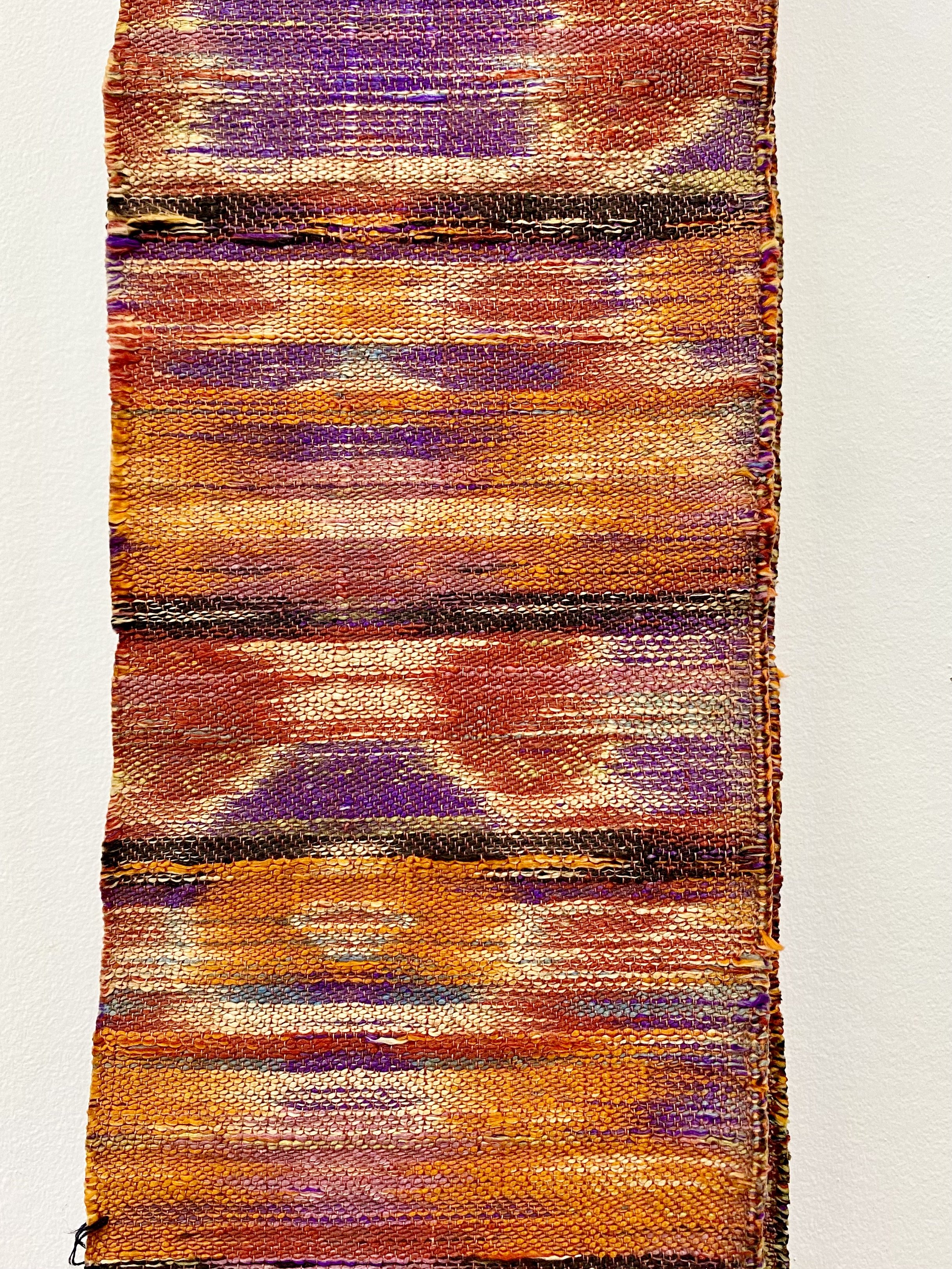 Image 5 of 9
Image 5 of 9

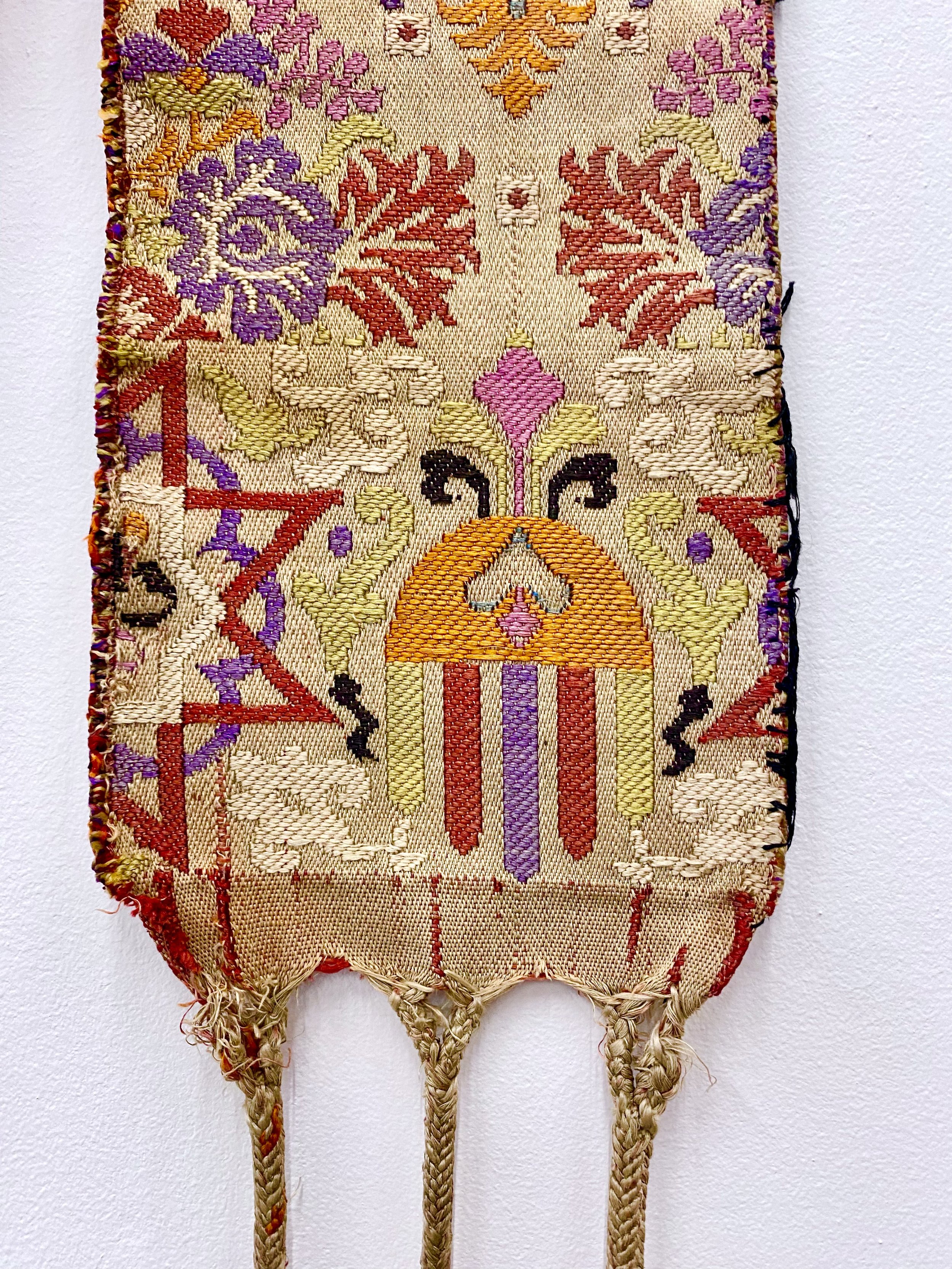 Image 6 of 9
Image 6 of 9

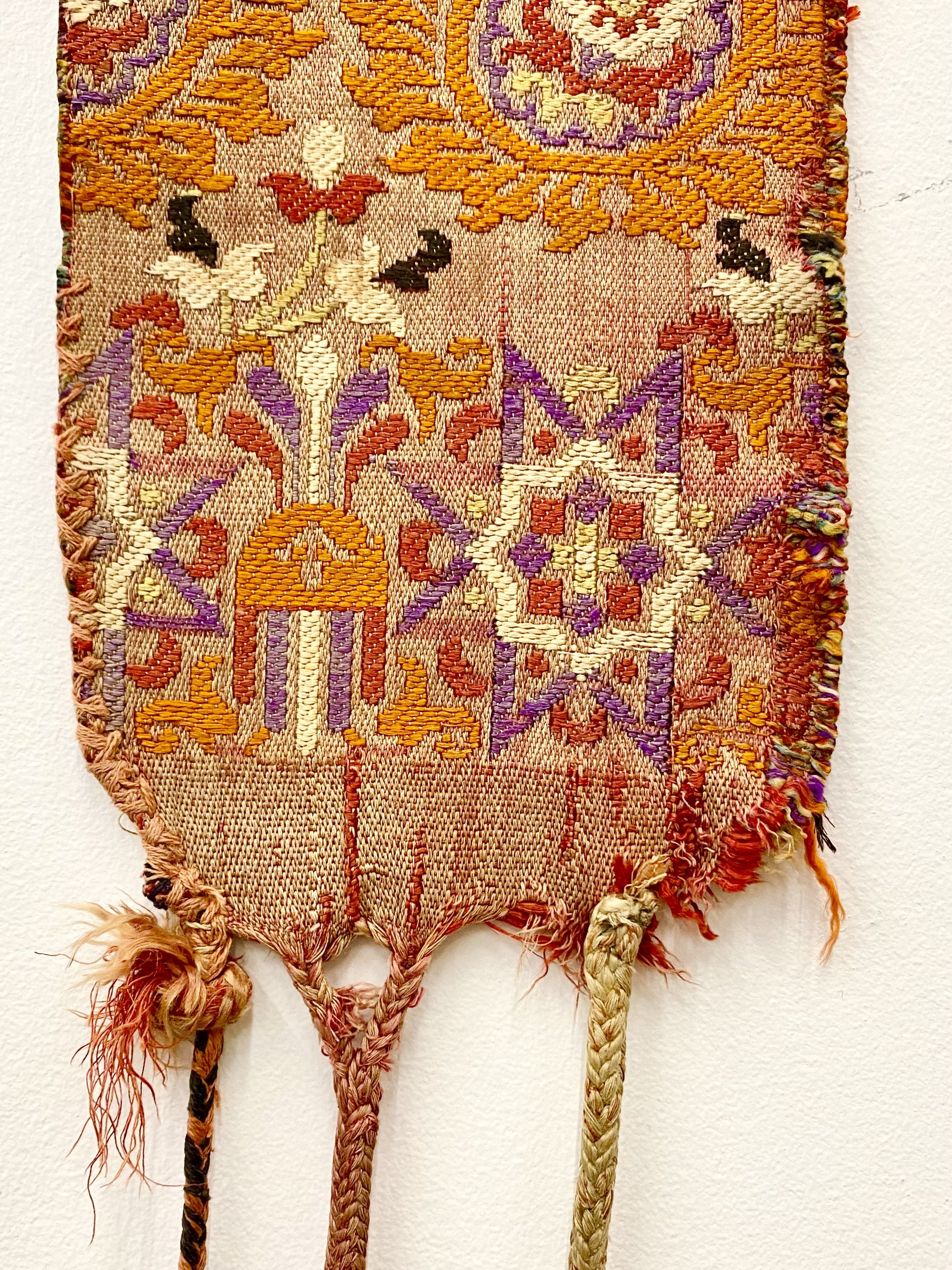 Image 7 of 9
Image 7 of 9

 Image 8 of 9
Image 8 of 9

 Image 9 of 9
Image 9 of 9










Moroccan Hezam "Wedding Sash"
The hezam is the pinnacle of Moroccan textile design. The finest examples were produced in Fez, in the late 19th-and early 20th century, and can be found in major museum collections. They are generally associated with Arab Muslims, but were also used in the Jewish and Berber communities. Hezam were worn by women, wrapped around the waist, on special occasions. They still sometimes make an appearance at traditional weddings. These luxurious sashes were an indicator of social status, but mostly, they were vessels of tradition, being passed down through the generations.
Thick silk brocade, featuring geometric and floral motifs, including the hamsa, or hand of Fatima, a potent symbol of protection (especially from the evil eye). Almost psychedelic in the vibrancy of its colors. The reverse has an ikat-like quality, just as interesting to the modern eye as the front. The long tassels are made from braiding together the exposed weft at each end. Typically, there are five or six of these, so it is likely some are missing. There's also some fraying at the edges of the sash, which have been stabilized in places with black thread. Truly, an heirloom! 108" (9') long by 4 1/2 -5" wide.
The hezam is the pinnacle of Moroccan textile design. The finest examples were produced in Fez, in the late 19th-and early 20th century, and can be found in major museum collections. They are generally associated with Arab Muslims, but were also used in the Jewish and Berber communities. Hezam were worn by women, wrapped around the waist, on special occasions. They still sometimes make an appearance at traditional weddings. These luxurious sashes were an indicator of social status, but mostly, they were vessels of tradition, being passed down through the generations.
Thick silk brocade, featuring geometric and floral motifs, including the hamsa, or hand of Fatima, a potent symbol of protection (especially from the evil eye). Almost psychedelic in the vibrancy of its colors. The reverse has an ikat-like quality, just as interesting to the modern eye as the front. The long tassels are made from braiding together the exposed weft at each end. Typically, there are five or six of these, so it is likely some are missing. There's also some fraying at the edges of the sash, which have been stabilized in places with black thread. Truly, an heirloom! 108" (9') long by 4 1/2 -5" wide.
The hezam is the pinnacle of Moroccan textile design. The finest examples were produced in Fez, in the late 19th-and early 20th century, and can be found in major museum collections. They are generally associated with Arab Muslims, but were also used in the Jewish and Berber communities. Hezam were worn by women, wrapped around the waist, on special occasions. They still sometimes make an appearance at traditional weddings. These luxurious sashes were an indicator of social status, but mostly, they were vessels of tradition, being passed down through the generations.
Thick silk brocade, featuring geometric and floral motifs, including the hamsa, or hand of Fatima, a potent symbol of protection (especially from the evil eye). Almost psychedelic in the vibrancy of its colors. The reverse has an ikat-like quality, just as interesting to the modern eye as the front. The long tassels are made from braiding together the exposed weft at each end. Typically, there are five or six of these, so it is likely some are missing. There's also some fraying at the edges of the sash, which have been stabilized in places with black thread. Truly, an heirloom! 108" (9') long by 4 1/2 -5" wide.